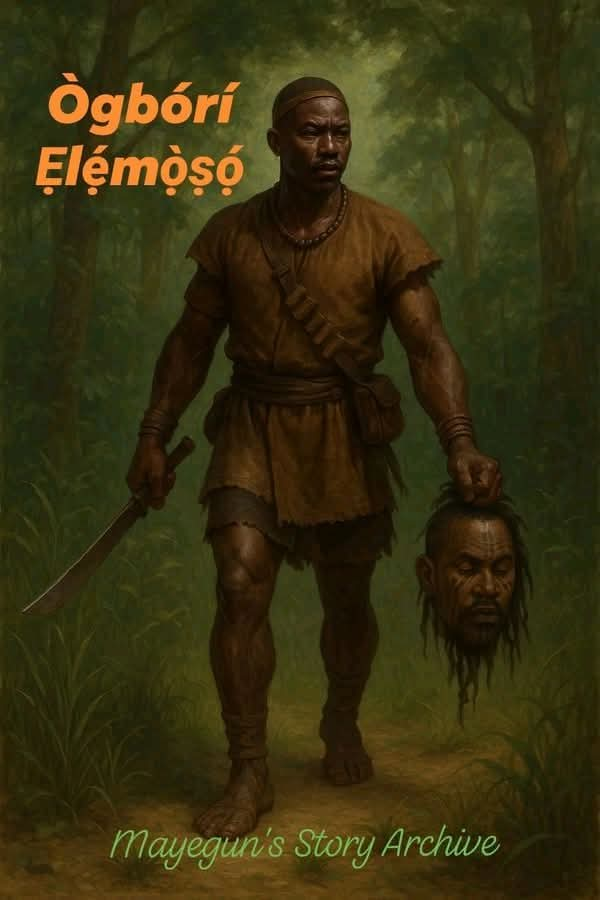ÒGBÓRÍ ẸLẸ́MỌ̀ṢỌ́: THE HISTORY OF ÒGBÓMỌ̀ṢỌ́
ÒGBÓRÍ ẸLẸ́MỌ̀ṢỌ́: THE HISTORY OF ÒGBÓMỌ̀ṢỌ́
Nestled between Ilorin and Oyo Town in southwestern Nigeria, the town of Ogbomoso boasts a rich and heroic history. It was founded in the mid-17th century by Ogunlola, a fearless hunter of Ibariba descent. Around 1650, Ogunlola migrated to the area—then a dense, wild forest—pursuing his hunting career. Accompanied by his wife, Esuu, he camped under an ajagbon tree, a historic tree still standing today near the Soun’s palace. In time, they built a hut near the tree and made the jungle their permanent home.
Not long after settling, Ogunlola noticed smoke rising daily from nearby areas. Investigating, he discovered four other hunters who had also made the forest their home. The first was Aale, a Nupe elephant hunter who camped at what is now called Oke-Elerin (“Elephant Hill”). The second was Onisile, a prince from Otta, who fled his hometown over a disputed royal title and settled in what is today Ijeru. The third, Orisatolu, camped at Isapa, and the fourth settled in Akande, an area that has since disappeared.
Ogunlola, with his unmatched hunting prowess and the support of his wife Esuu—renowned for making popular tobacco snuff and guinea corn wine—soon established dominance among the hunters. Together, they formed a society called Alongo, which focused on mutual protection against slave raiders, cooperative hunting, and communal support. As more people joined the settlement, it grew from a simple camp into a thriving village. Ogunlola’s hut became the community’s administrative center, where disputes were resolved and decisions made, naturally elevating him to the position of leader.
According to historical accounts, Ogunlola was later imprisoned in Oyo-Ile, the capital of the old Oyo Empire, for an alleged crime. While in prison, he learned of a fierce warrior named Elemoso who was terrorizing the city. Ogunlola pleaded with the Alaafin—the king of Oyo—to release him so he could confront Elemoso. After persistent appeals, the Alaafin agreed.
Elemoso was known for his strength and deadly skills with sword and arrow. Ogunlola carefully studied his movements and, after days of stealth, ambushed him one night. Ogunlola shot Elemoso with an arrow, beheaded him, and triumphantly presented the head to the Alaafin. Overjoyed, the king not only granted Ogunlola his freedom but also urged him to remain in Oyo-Ile. However, Ogunlola respectfully declined, replying, “È jé kí á má ṣe òhún”—meaning, “Let me tend to my own land yonder.” From this statement, the title Soun—the traditional ruler of Ogbomoso—was derived.
Upon his return, Ogunlola was made the paramount leader and became the first Soun of Ogbomoso. The settlement came to be known as the settlement of the man that brought the severed head of Elemoso, “Eyi ti ogbori Elemoso”—”the place of he who brought the head of Elemoso.” Over time, this was shortened to Ogbori Elemoso, and eventually to Ogbomoso, the name it bears today—a lasting tribute to Ogunlola’s bravery.
From its humble beginnings as a jungle camp, Ogbomoso grew into a formidable town, playing a significant role in the broader history of Yorubaland.
Watch out for this story in series, courtesy
Mayegun ‘s Story Archive
Please invite friends to like our page All About Yorùbá for more
Thanks an God bless
